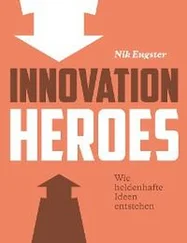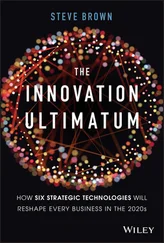Nowadays, everyone is invited to innovate, everywhere and all the time (Gaglio 2017). This “setting in motion” is supported and stimulated by the creation of investment funds, incubators or dedicated places that encourage actors from different backgrounds to “take action” (Mootoosamy 2016), without necessarily attaching great importance to the evaluation of the real positive effects that are brought about, as well as to the collateral effects generated (Godin and Vinck 2017). Entrenched as an ideal, innovation in fact tends to constitute a value in itself – innovate to innovate (Gaglio 2011) – or even an ideology – innovate or perish (Oki 2019) – where stability and conservatism are mostly described in a pejorative way. It refers indiscriminately to everything that is good, new and useful, likely to play a role in the socio-economic and societal challenges facing modern societies (Oki 2019). It is no longer a matter of challenging the established political order, but rather of reinforcing and conforming to it. This sacralization is nothing new: more than 50 years ago, Rogers (1995) pointed out the existence of a “pro-innovation bias” in Western societies, which consisted of considering innovation as fundamentally and systematically positive for the economy and society. We expect innovation, especially innovation based on science and technology, to lead us out of stagnation, or even economic and social crises (Joly 2019; Lechevalier and Laugier 2019). Innovation is said to be economically virtuous: there is indeed a myth according to which the maximization of value obtained through innovation is not merely a source of competitiveness, but also of trickle-down to other spheres of the economy (maintaining employment, protecting social models), according to a very classic but widely contested theory in economics. More broadly, innovation is increasingly seen as the solution to major challenges, in very different sectors (global warming, food security, depletion of natural resources, demographic aging, etc.) (Joly 2019).
Within the sports and active leisure sector, innovation has long been associated with the evolution of practices, equipment and techniques (Vigarello 1988). As early as the 1980s and 1990s, Pociello (1995) emphasized the diversification and hybridization of sports activities, which gave rise to the somewhat undoubtedly excessive (see Passeron 1987), term of “new practices”. In the sporting goods industry, product innovation is presented as a strategic necessity for achieving competitive advantages (Desbordes 2000). It is described as a way of differentiating and stimulating demand by Tjønndal (2016), which is all the more crucial as the sporting goods industry is a highly segmented economic sector, particularly competitive (Hillairet 1999, 2005) and highly subject to fads (Andreff 1985) 1 . Since the end of the 2000s, the prospects offered by digital technology have attracted increasing attention. Beyond this strong focus on the technological dimension, which seems to permeate all sectors of activity (Lechevalier and Laugier 2019), innovation in the field of sport also concerns services, processes or events. Moreover, it can be organizational, territorial or social.
For example, research on the federal or public sector focuses on service innovation (Hoeber et al . 2015; Wemmer et al . 2016; Winand et al . 2016). The sports sector, understood here in the broadest sense, thus constitutes a privileged observatory of innovation situations. It provides a glimpse of the many facets of inventive activity, within contexts, organizations and spaces that are themselves very diverse.
I.3. What innovation is and is not: in search of a definition
In view of the evolution of its meaning, the sacredness of which it is currently the object and its omnipresence in the field of sport, we need to clarify what is meant by innovation.
Indeed, a notion that has become unavoidable is not yet clear. Still rather obscure, often confused with invention, creativity or change, the term innovation covers different realities depending on who uses it, and therefore remains rather vague (Mootoosamy 2016). It is in fact a “catchword” that is a source of ambiguity (Garcia and Calantone 2002), on the one hand because it has been the subject of multiple definitions (depending in particular on the scientific disciplines (Boly 2004)), but also because it is strongly imbued with values.
This situation refers to a classic difficulty in the social sciences: the concepts used circulate for the most part in everyday language, often in a vague manner and according to a variety of meanings (Bajoit 2003; Passeron 2006). A classic trap is to consider the categories of common sense sufficiently “meaningful” not to bother with costly terminological precautions (Duchastel and Laberge 1999).
In this opening section, we will try to avoid the frequent confusion between invention and innovation. In light of the above, it would be futile to seek a generic definition of innovation. However, all of the work in the social and management sciences incorporates a fundamental distinction made by Schumpeter nearly a century ago: invention – the inaugural discovery of a new thing – should never be confused with innovation – a process of a fundamentally social nature (Alter 2000). If the former refers to an idea, initial concept or prototype, the latter is conceived as the progressive socialization of this discovery. In a way, the condition for innovation is that the initial idea be “adopted, at least by and in a social milieu” (Gaglio 2011, p. 4). This may involve bringing the invention to market, but this step cannot be considered sufficient to make it an innovation: many commercialized products and services hardly find any takers (Teece 2010). The success of an innovation is indeed linked to its appropriation by consumers or end-users. Beyond this common denominator, the understanding of the process leading from invention to innovation (for example, the conditions of emergence or expansion), as well as the types of actors considered to play a role in it, clearly vary according to theoretical and disciplinary approaches. It should also be noted that there is an ambiguity in the term innovation, which designates both a thing and a state (a novelty that has succeeded) and a process (the actions and trajectory of diffusion of a novelty).
It is also necessary to distinguish between different degrees or regimes of innovation. To do this, we shall use the concept of dominant design (Abernathy and Utterback 1978; Garel and Rosier 2008) 2 . It is a standard, a set of characteristics and properties of products that are accepted, recognized at a given time and common to all market players. A dominant design implies that we know how to identify, design, manufacture, promote, distribute and use a product or a service. A product is then easily and quickly recognized for what it is, within the framework of a dominant design. It is a stable architecture that enables functions to be fulfilled and users to be satisfied, with a certain level of performance around which competition shall be organized, but also an ecosystem and an established business model (with its technologies, regulations, market, commercial relations, value creation system, etc.). Disruptive innovation involves a change in dominant design. This emergence is rare, systemic, and it is a long process. It rarely emanates from established companies, which have little interest in upsetting markets that have consolidated their competitive position, in destabilizing customers who are mainly looking for marginal improvements, and are more or less captive to the network that has been set up within their sector (Christensen 1997). There is also a widespread fear that already marketed products will be “cannibalized” in this way (Leitner 2017).
Читать дальше












